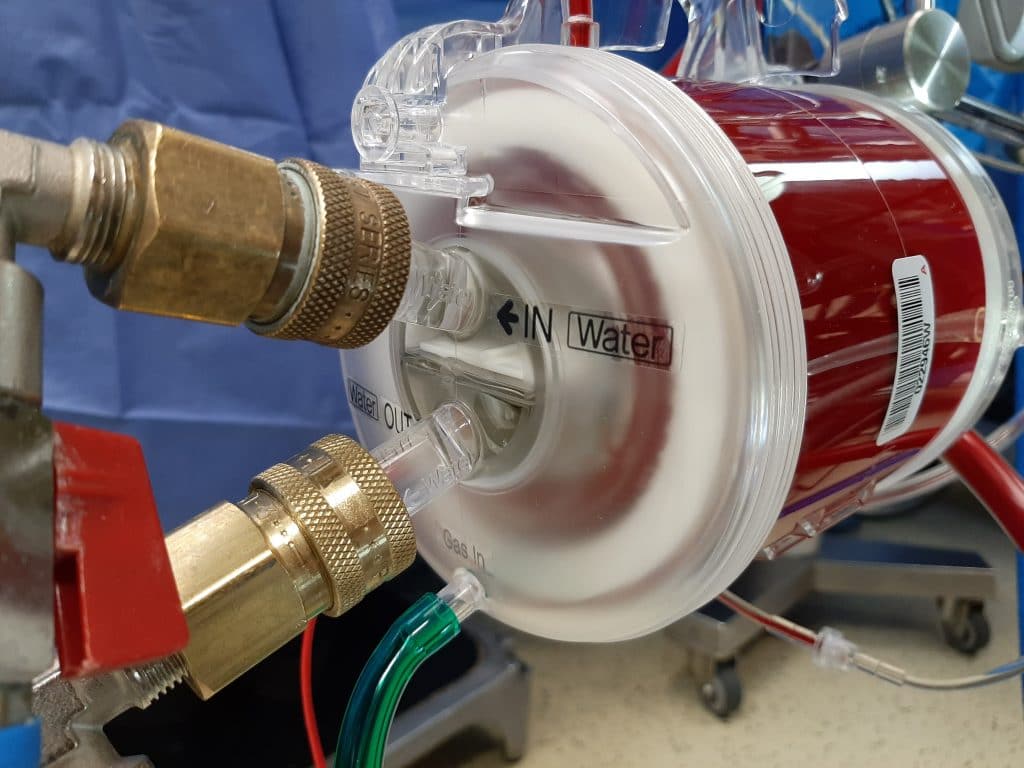Nitric Oxide Added to the Sweep Gas of the Oxygenator during Cardiopulmonary Bypass in Infants: A Pilot Randomized Controlled Trial

Our objective was to assess the effect of nitric oxide added to the sweep gas of the oxygenator during cardiopulmonary bypass (CPB) in infants on platelet count, platelet function, clinical outcomes, and safety. A randomized, double blinded, placebo controlled clinical trial in infants less than a year of age undergoing cardiac surgery requiring CPB was undertaken. Nitric oxide at a dose of 20 ppm was added to the sweep gas in the treatment group. Blood was collected at baseline and prior to separation from CPB to measure platelet count and function as determined by responsiveness to specific agonists. Clinical outcomes were observed through hospital discharge. Methemoglobin levels were measured pre‐operatively, at the conclusion of CPB, and upon admission to the ICU. Forty patients consented and were randomized in the trial. Eighteen patients were randomized to the treatment group and twenty‐two were included in the placebo group. The groups were similar in terms of age, weight, gender, and surgical complexity. No significant differences were found in measures of platelet count, platelet response to agonist, or clinical outcomes. Patients in the treatment group had higher methemoglobin levels after receiving nitric oxide, but no levels approached toxicity (maximum 2.4%). Nitric oxide added to the sweep gas of the oxygenator during CPB in infants did not have an appreciable effect on preservation of platelet count, platelet responsiveness to agonist, or clinical outcomes. Methemoglobin levels were increased after receiving nitric oxide but were far below a toxic level of 15%.
